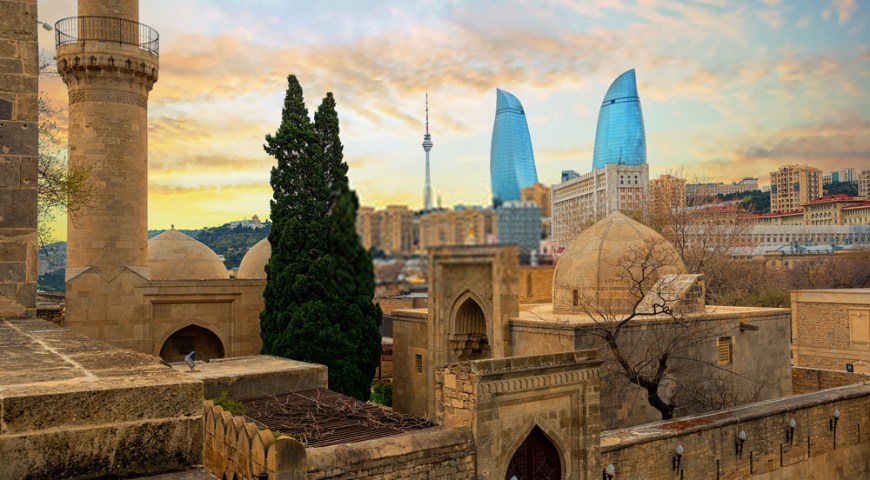
SHIRVANSHAH’S PALACE
The Palace of the Shirvanshahs is a 15th-century palace built by the Shirvanshahs and described by UNESCO as “one of the pearls of Azerbaijan’s architecture”. It is located in the Inner City of Baku, Azerbaijan and, together with the Maiden Tower, forms an ensemble of historic monuments inscribed under the UNESCO World Heritage List of Historical Monuments. The complex contains the main building of the palace, Divanhane, the burial-vaults, the shah’s mosque with a minaret, Seyid Yahya Bakuvi’s mausoleum (the so-called “mausoleum of the dervish”), south of the palace, a portal in the east, Murad’s gate, a reservoir and the remnants of a bath house. Earlier, there was an ancient mosque, next to the mausoleum. There are still ruins of the bath and the lamb, belong to the west of the tomb.
In the past, the palace was surrounded by a wall with towers and, thus, served as the inner stronghold of the Baku fortress. Despite the fact that at the present time no traces of this wall have survived on the surface, as early as the 1920s, the remains of apparently the foundations of the tower and the part of the wall connected with it could be distinguished in the north-eastern side of the palace.
There are no inscriptions survived on the palace itself. Therefore, the time of its construction is determined by the dates in the inscriptions on the architectural monuments, which refer to the complex of the palace. Such two inscriptions were completely preserved only on the tomb and minaret of the Shah’s mosque. There is a name of the ruler who ordered to establish these buildings in both inscriptions is the – Shirvan Khalil I (years of rule 1417–1462). As time of construction – 839 (1435/36) was marked on the tomb, 845 (1441/42) on the minaret of the Shah’s mosque.
The burial vault, the palace and the mosque are built of the same material, the grating and masonry of the stone are the same. The complex used to occupy more place. There were rooms for court servants and services.
The main buildings of the ensemble were built at different times. Despite this fact, these buildings are linked by unity of scale, by rhythm and proportionality of the basic architectural forms – cubic volumes of buildings, domes, portraits. The builders of the ensemble relied on the traditions of the Shirvan-Absheron architectural school.
In 1964, the palace complex was declared a museum-preserve and taken under the protection of the state. In 2000, this ensemble, along with the fortified walls of the historic part of the city and the Maiden Tower, was included in the UNESCO World Heritage List.

